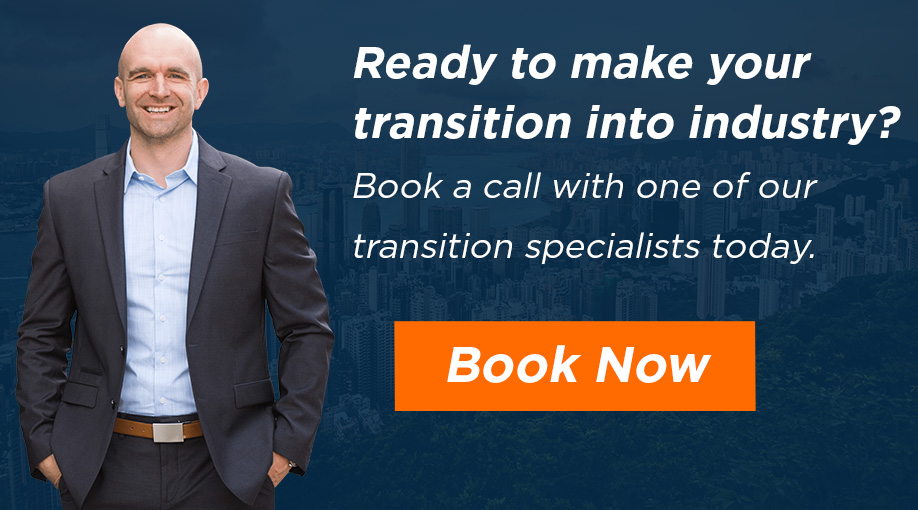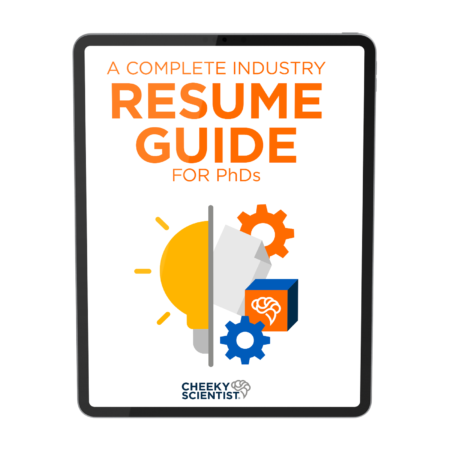How To Get A Referral Without The Messy Emotions

Towards the end of my PhD, I felt like I was racing time. And time was winning.
I was frantically trying to wrap up loose ends in my research, finish writing my thesis, all the while trying to find a job.
I knew I wanted a job in industry. In fact, I knew exactly the job I wanted.
I just didn’t know how to get there.
I was sending my resume off into the abyss of the internet, but I wasn’t getting any replies. I couldn’t fathom what I was doing wrong.
The whole thing felt pointless.
Now, looking back with hindsight, I can tell you exactly where I was going wrong in my job search.
I wasn’t networking. I wasn’t getting informational interviews. And I wasn’t getting referrals.
As one Cheeky Scientist recounts:
“As Isaiah always says, it only takes one YES. That is absolutely true! Here’s how I converted a NO to a YES.
I’ll first admit I felt lazy and uploaded a generic CV to a number of jobs on a job board. I was just so frustrated with my job search. Let me tell you, I won’t do that again! It resulted in an immediate rejection.
To redeem myself, I got back online. I connected with the HR contact for the job on LinkedIn and ended up having an informational interview with them. That then led to another conversation with someone in talent acquisition.
Long story short, I went from a straight-up rejection to an interview with the company!
Referrals are truly king when it comes to landing a job in industry!”
No Referral. No Job Offer. Period.
If you doubt that you need a job referral to land an industry job, let’s take a look at the hiring funnel.
According to Forbes, nearly 80% of open position are never publicly advertised. That means you’re only seeing 20% of the available jobs – unless, that is, you have inside connections.
On top of that, based on a study conducted by the Federal Reserve Bank of New York and MIT, only 23% of applicants that apply through a job board get hired.
So, how are the other 77% of candidates getting hired? The answer is resounding – referrals.
Despite this, only 7% of job applicants apply with a referral in hand. That means, if you get a referral, you’re ahead of 93% of the applicant pool.
The truth is companies prefer to hire someone with a referral. In fact, for many, their goal is to have 50% of their new hires derived from referrals.
It not only guarantees a higher quality employee, but it also increases employee retention. That’s because people hired through a referral are more satisfied with their work.
So today, I’ll walk you through the 6 steps you need to take to get a referral and land your ideal job in industry.
6 Painless Ways To Get Referrals For PhD Jobs
1. Want a referral? First, find companies you want to work for.
When it comes to professional connections the more the merrier, right? While true to some extent, you also want to ensure you’re reaching out to the right people.
That means, before you start clicking away at the “connect” button, create a strategy.
First things first – know what companies you want to target in your job search. Create a list of companies you want to work for and rank them, first choice to last.
A spreadsheet is useful for this step.
That way, you can track your progress throughout your job search – for example, what employees you’ve contacted, if and when they’ve responded, and general information regarding the company.
When building your list, ensure to look beyond the obvious. Many PhDs mistakenly restrict their job search to the corporate giants they’re familiar with.
But think about – if you’re making this mistake, how many other PhDs are following suit? You could be just one applicant out of thousands for these positions.
So, don’t inadvertently sabotage your chances by casting a restricted job search net.
If you’re a Molecular Biologist, look beyond pharma giants like Pfizer, Roche, and Novartis. If you’re in data science, look beyond Google and Amazon.
There are so many dynamic and exciting small-to-medium sized companies that are fervently hiring PhDs.
Expanding your options will not only help you increase your chances of getting hired, but it may also help you find a better company fit.
And finding the right company culture is critical to your success in the long run.
In fact, most employees rate their work environment – the type of company and the company fit – as one of the top reasons they stay or leave a position.
So, ask yourself: what kind of company culture best suits you? Do you like working as part of a small research team or as a member of a larger conglomerate? Do you prefer a job title that is rigid or one that is more fluid?
Big pharma may be a good fit for some, but not everyone is well-suited for a large corporate environment.

2. Find employees working for your target companies on LinkedIn.
With your list of target companies in hand, your next job is to find employees working at these companies.
To do this, search for a company on LinkedIn. Under their profile, click on the tab entitled “People”. Everyone that works there (that’s on LinkedIn) will be listed.
So, who is your best bet? Who will provide you with an inside view of the company? Who makes the hiring decisions at the company?
If this is what you’re asking yourself, you’re asking the wrong questions.
At this stage of the game, you should be asking yourself ‘Who is most likely to say “yes” to my request for an informational interview, and eventually, a referral?’
A common gaffe amongst PhDs is to head straight to the top of the corporate ladder. They think the people that’ll get them hired are the CEOs, Directors, and Department Heads of the company.
This just isn’t true.
To start, these are the busiest people in the company. They spend most of their waking hours keeping their company running – why would they bother to answer a LinkedIn message from a stranger?
The higher-ups are also not the gatekeepers of the company; the ones that act as the initial resume filter.
In the end, you want to get your resume into the hands of a decision maker – the hiring manager.
So, I should connect with the hiring manager of the company? Not quite.
Think of it from the hiring manager’s point of view.
You receive a message from someone that doesn’t work for your company, doesn’t share any common interests, and is asking for a job – would you want to help this person?
Probably not.
You need to work backwards, starting with the employees that are in roles you want.
The goal is to connect with people at your level. People are more likely to respond to those they deem colleagues.
Also, who do you think can provide better insight into the day-to-day of a job – the hiring manager that knows a job based on the written job description or someone that actually works the job?
In this situation, lived experience always trumps.
So, if you want to be Clinical Research Associate, reach out to people in that exact role – not the Clinical Trials Project Manager. If you want the job title Data Scientist, connect with Data Scientists at various seniority levels.
The aim is to create longstanding connections, not just temporary ones that simply serve as a means to an end – like getting a job.
3. If you don’t have mutual connections, create them.
Now that you have a handful of employees with the job title you want – what’s next?
As the ambitious PhD you are, you probably want to dive right in, reaching out to the employees and creating a network of connections within the company.
But not so fast!
Remember, at this point, you’re still a total stranger. And again, how willing are you to help a stranger?
The best way to build credibility with someone that you’ve never met is to get an introduction from someone that you both know.
Mutual connections are so important – they act as the bridge between you and the person you want to meet.
So, among your list of employees, see if any have shared connections. Those with shared connections will be marked as 2nd in your network, meaning they’re 2 degrees removed from you.
If you don’t have any shared connections, create them.
This may sound exhausting but consider the phrase “6 degrees of separation”.
This saying is based on the theory that any person in the world is connected to any other person by no more than 5 intermediary connections.
So, if you’re just five people away from every other person on this planet, how many intermediary connections do you think exist between you and someone else in your field?
Chances are you won’t have to search so far and wide to find a common connection.

4. Build rapport with your mutual connection(s).
Once you establish a mutual connection, work on building a rapport.
In your initial reach out, start by addressing them as you would any other colleague.
Take a casual yet polite approach – something that says, ‘Hey, you and I are a lot alike’. For example, starting with ‘Hi Annie’ is much more friendly and inviting than ‘Dear Annie’.
In the body of the message, make certain to add value – congratulate them on a recent accomplishment or promotion at work, ask for advice, or comment on a recent journal article they’ve authored.
You can also offer them an introduction to someone you know with similar interests or background. Anything that elevates them as an expert in the field.
Adding value creates a common ground and increases their willingness to help you.
Once you’ve provided this value, then you can ask for an introduction.
For example:
‘I’m interested in learning more about [field of study/career path]. I see that you’re also connected with John who works in a similar [field/position]. Would you be willing to introduce us? I’d love to ask him a few questions regarding his experience’.
Also make sure you provide them with an “easy out”.
You can say, ‘I understand if you’re not comfortable doing this. Please let me know if you have any questions for me’.
This lowers the pressure which, believe it or not, increases the likelihood of them saying “Yes”.
Ultimately, you need to make saying “Yes” easy. Lowering the pressure is one way to do this, but the best way is to provide a pre-written introductory script.
That way, they don’t have to do any of the heavy lifting.
Overall, an effective message adds value to the person, is forthright without being rude, and makes it as easy as possible for them to say “Yes”.
5. Establish credibility before asking for an informational interview.
When reaching out to employees at your target company, apply the same ground rules outlined above.
Maintain a professional demeanor, be clear in your intentions, and ensure that the conversation remains friendly and collegiate.
And just as before, avoid asking for anything before adding value. You must establish a rapport before moving in for an “ask” – especially when the connection is new.
That means, exchange a few messages prior to asking for an informational interview.
For many PhDs, this is the beginning of the end. They reach out to someone, they get a response, they reply, but after that, nothing happens.
Either the person doesn’t respond, or the conversation just fizzles out.
As I said, to get an informational interview you must first build a rapport. To build rapport, you must keep the conversation alive.
The most effective way to do this is to ask thoughtful yet simple questions – something that is easy for them to answer.
Feed into their passions by asking them about a field, organization, or hobby they’re actively involved in.
For example, ‘I found your theory on XYZ very interesting. As someone looking to enter this field, I would really love to hear your input on ABC. What do you think about DEF?’
Apparently, where you put the question in the message also matters. Research shows that putting the questions as a P.S. at the bottom of the message is the best way to guarantee a response.
That’s because the P.S. is one of the most eye-catching parts of a message – only second to the greeting and the subject line.
Once a rapport is built, then you can start working towards an informational interview. And when you ask for one, make your request specific.
For instance, ‘I’m very interested in learning more about your experience in XYZ and value your advice. I have 3 questions about your current position. Would you be available for a brief chat over the phone?’
People are more willing to say “Yes” when they know it won’t take up much of their time. You can further lessen their burden by providing several timeframes for them to choose from.

6. Lead an informational interview towards a referral.
Say they agree to any interview. First off – that’s great news! That means all your hard work is paying off.
But now isn’t the time to slack. You want to take full advantage of this opportunity.
Remember, your ultimate goal is to get a referral. You should always be working towards that during the interview.
That means, go prepared. And believe it or not, the key to preparedness is to not over-prepare.
Many PhDs make the mistake of writing down 101 questions – they obsess over getting every last question answered and end up frustrated when the conversation gets derailed.
Don’t make this mistake – it quickly turns an enjoyable conversation into a hostile interrogation.
The interview should be free-flowing while still retaining focus – not on your questions, but on them.
Tap into their interests, ask thoughtful questions, and remain genuinely engaged.
Your goal may be to get a referral, but their goal is to share their experience – allow them to do so.
Start by asking questions about themselves – where they grew up, what their hobbies are, what they like about their current field.
This is a great way to break the ice and allows them to open up.
Next, move to questions regarding their company and their current position.
How do they like their position? What is their day-to-day? What is the standard career trajectory for employees at the company?
Then, in the final stages of the interview, ask for their advice.
You could ask them what they’d recommend to someone in your position, how they would describe the ideal candidate for the role, or even if there’s anyone else at the company they’d suggest speaking to.
This not only helps move the conversation towards you – what role you want, where you see yourself – but it also provides an opening to talk about available positions.
As you know, the majority of jobs are not publicly advertised, so this information is critical.
This is also the time to ask if they’d be willing to serve as a referral on your cover letter or application. Ask if they’re comfortable sharing your resume with the hiring manager.
As the conversation wraps up, make sure to discuss next steps. This could be a follow-up via email or LinkedIn; it can even be an additional discussion.
No matter what it is, make sure there’s something in the works that ensures the conversation continues.
Concluding Remarks
Landing a job in industry requires much more than the right combination of skills and experience – it demands a certain amount strategy. You may be the most qualified person for the job, but the employee will never know this if you can’t grab their attention. Remember, you’re not their priority. Sometimes, it takes fireworks to turn their head. So, make your own fireworks by creating a plan. Identify the companies you want to work for, find employees working for these companies on LinkedIn, and establish mutual connections. Mutual connections are the key to the industry door. And once you’re in that door, ensure to build credibility with your new company contact. Provide them with value by elevating them as the experts in their field. And always show your gratitude. In the end, the key to getting a referral is to remain focused on something outside of yourself whether it be your new connection, the company, or a bigger purpose. Follow these 6 steps and you’ll be sure to get a referral, and ultimately, get the attention of those that matter most in your job search.
If you’re ready to start your transition into industry, you can apply to book a free Transition Call with our founder Isaiah Hankel, PhD or one of our Transition Specialists. Apply to book a Transition Call here.

ABOUT ISAIAH HANKEL, PHD
CEO, CHEEKY SCIENTIST & SUCCESS MENTOR TO PHDS
Dr. Isaiah Hankel is the Founder and CEO of Cheeky Scientist. His articles, podcasts and trainings are consumed annually by millions of PhDs and other professionals in hundreds of different countries. He has helped PhDs transition into top companies like Amazon, Google, Apple, Intel, Dow Chemical, BASF, Merck, Genentech, Home Depot, Nestle, Hilton, SpaceX, Tesla, Syngenta, the CDC, UN and Ford Foundation.
Dr. Hankel has published 3X bestselling books and his latest book, The Power of a PhD, debuted on the Barnes & Noble bestseller list. His methods for getting PhDs hired have been featured in the Harvard Business Review, Nature, Forbes, The Guardian, Fast Company, Entrepreneur Magazine and Success Magazine.
More Written by Isaiah Hankel, PhD































